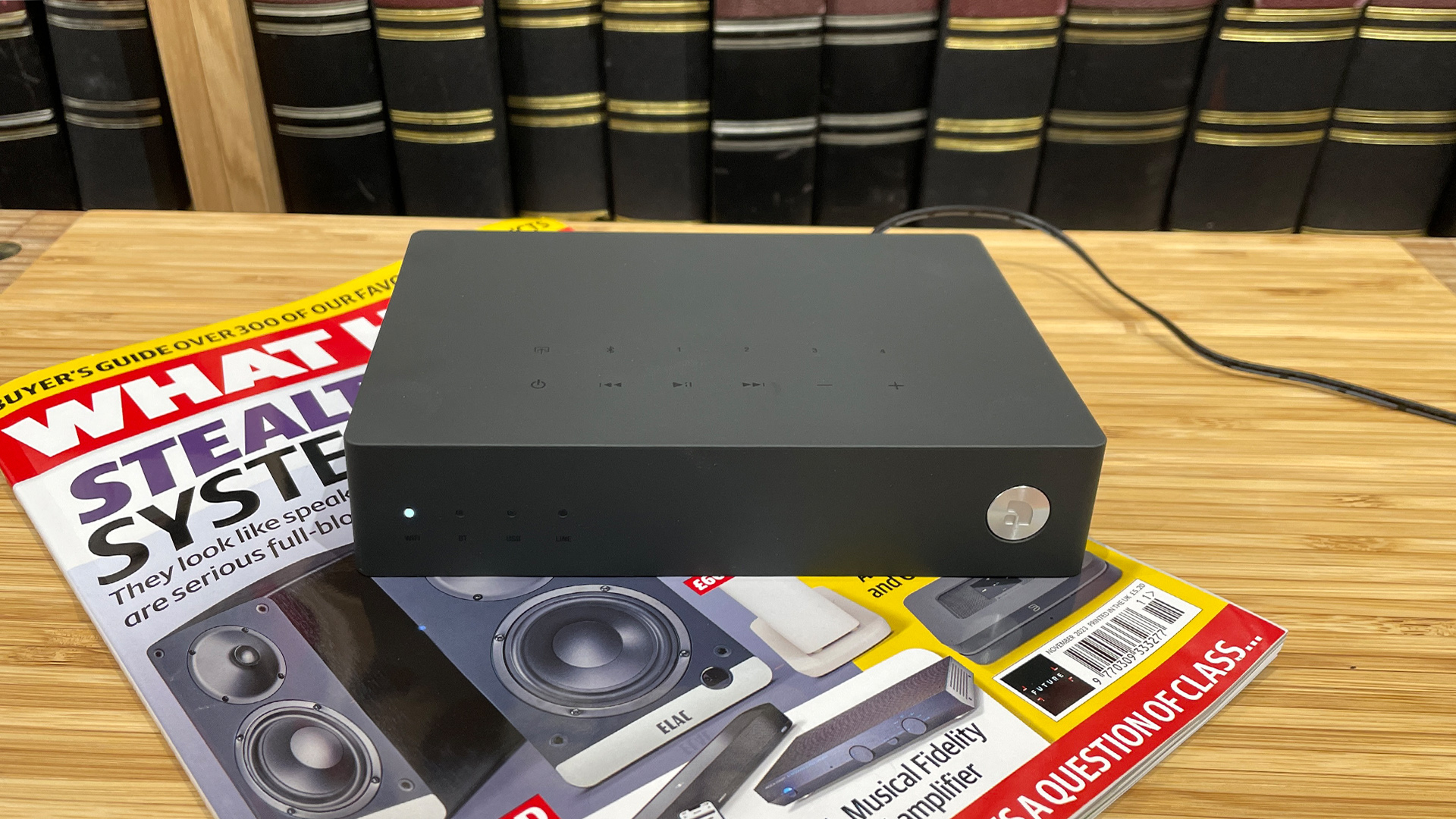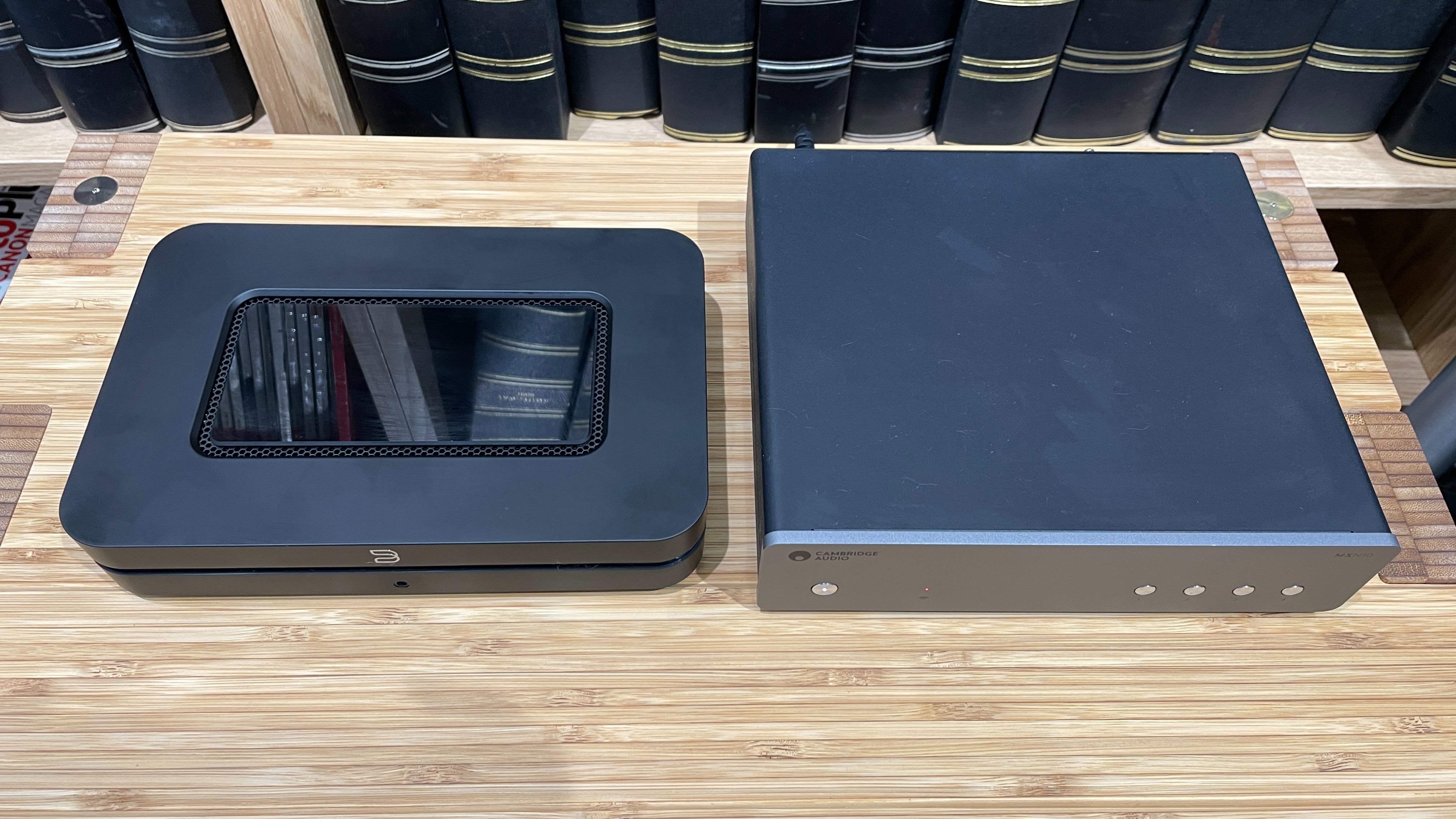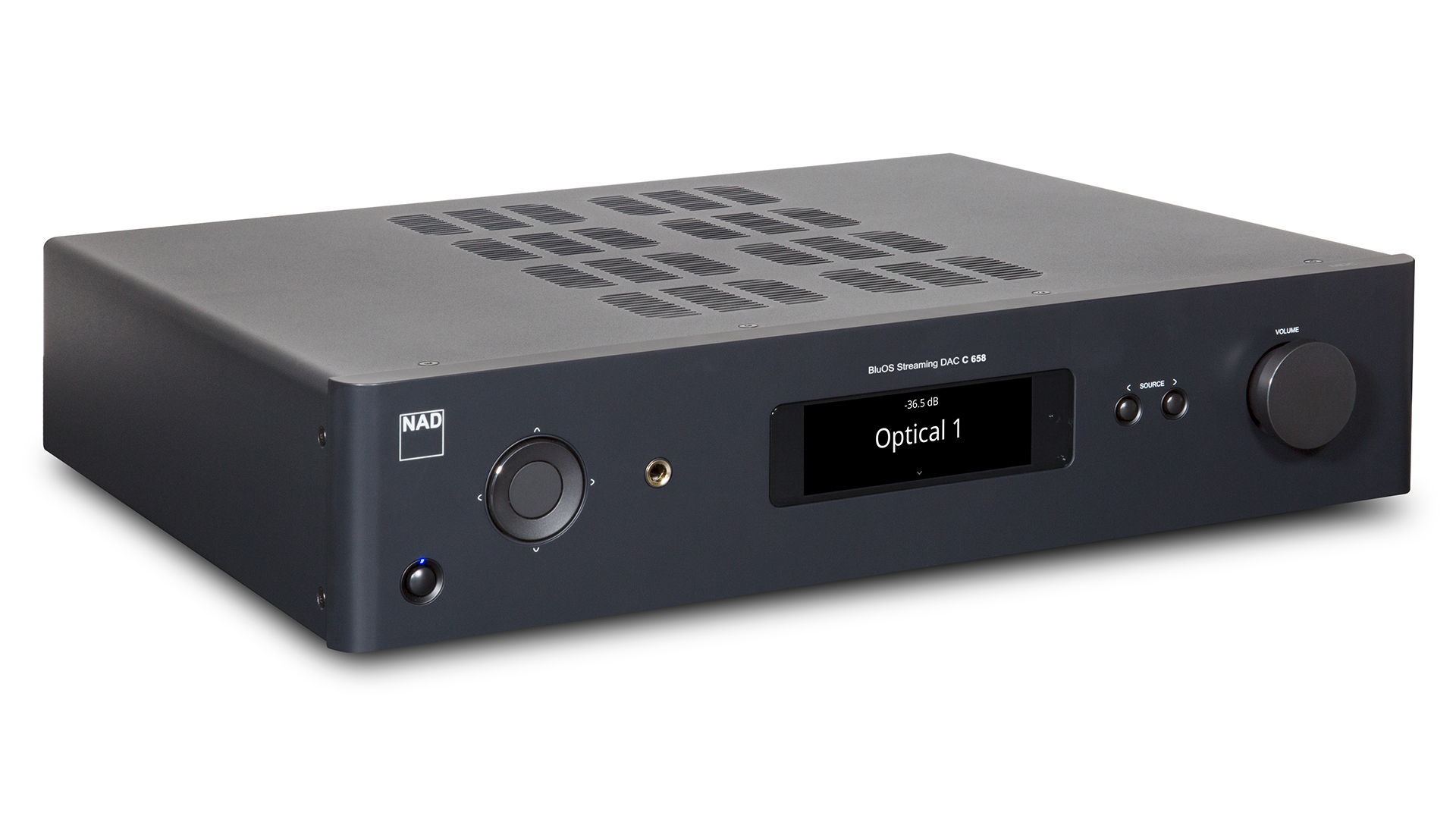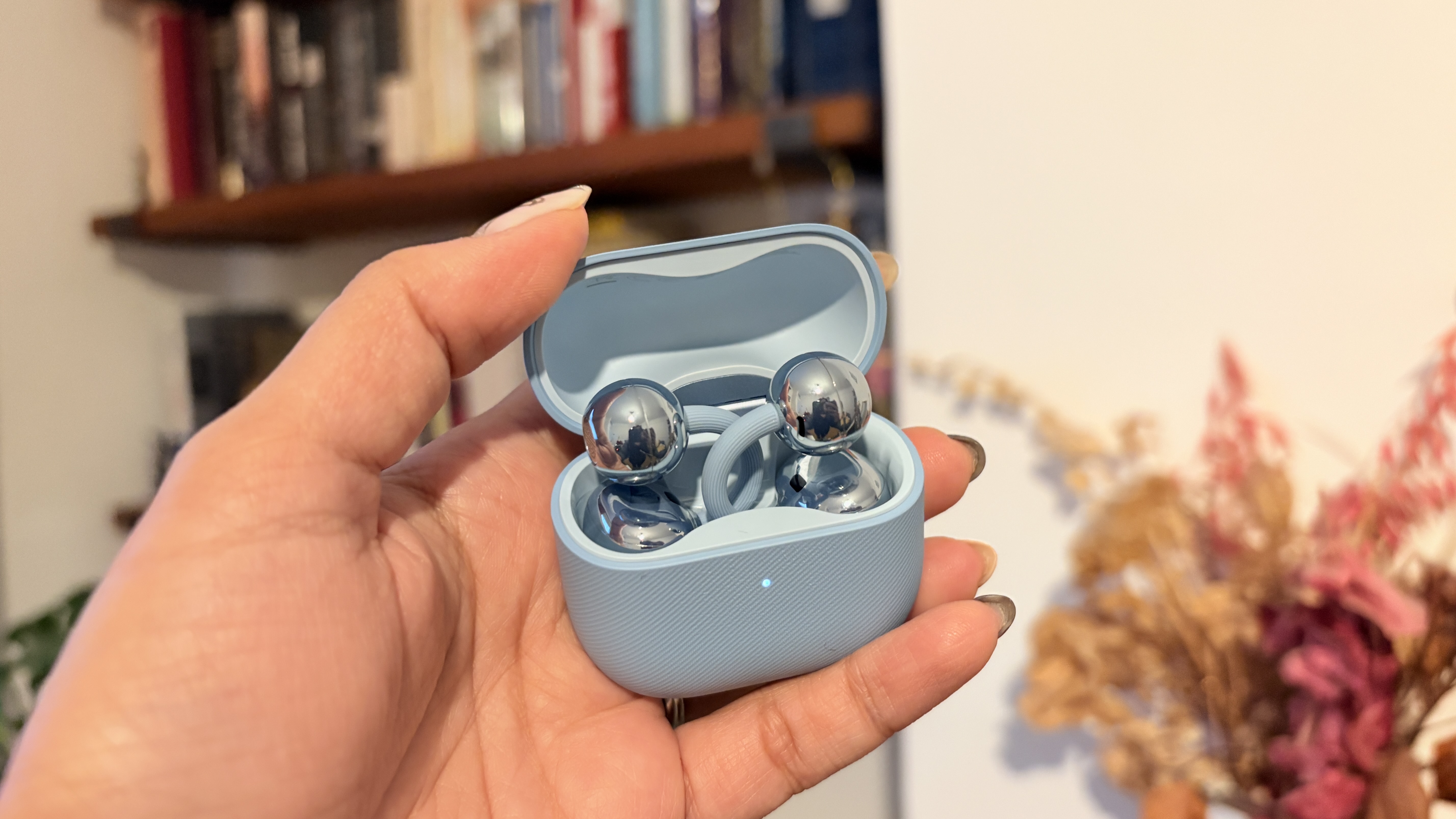How to add a music streamer to your hi-fi system
Complement, rather than replace, your existing kit

It feels as though we’ve now accepted streaming and welcomed it into the hi-fi community. Fears were real, and often founded, that it would replace physical media to detrimental effect, offering up inferior performance in return for perceived convenience.
In many ways, though, streaming has helped us fall in love all over again with those cumbersome old discs. Being able to throw music from your palm to your speakers can be wonderful, but our desire to savour an album’s cover artwork and actually hold it has far from been quelled. That speaks for vinyl more than CD, of course.
It is the rise and ubiquity of CD-quality streaming, not to mention the ever-increasing range of hi-res streaming options, that means you don’t need physical media for decent sound either.
So yes, you really can have it all. That’s why this piece is titled ‘How to add a streamer to your existing hi-fi system’, and not ‘How to replace it’ or ‘How to get the best price for your CD player on eBay’.
There’s a short answer, of course, which would be to head to our best music streamers guide, make a choice depending on your budget and requirements, and then plug the thing into your system. But, as ever, there are more important things than money when it comes to getting the best sound and feature set for you.
And what do we mean by a music streamer? It’s any component that allows you to play music wirelessly – using a streaming service app and/or network storage device – to your hi-fi system. Many streamers work with Bluetooth as well, but that’s not really what we’re talking about here; we want this device to connect to our home network, either via Ethernet or wi-fi, rather than have to send music to it directly from a smartphone, tablet or computer. This way we have the potential for even better sound and greater flexibility.
Better than Bluetooth

If multi-room is your bag and you have already bought into a family of wireless speakers, then there are plenty of ways to bring a traditional hi-fi set-up into your house-wide system. As many wireless speakers and music streamers increasingly support brand-agnostic platforms that facilitate multi-room connectivity, such as Apple AirPlay 2 and Google Chromecast, sticking with one brand for your whole-home audio is no longer necessary. But if you do value design (and sonic) synergy, the big multi-room hitters usually have a solution across both product categories, including Sonos and Audio Pro.
The latest hi-fi, home cinema and tech news, reviews, buying advice and deals, direct to your inbox.
Audio Pro is the cheapest of these two household favourites, with several high-performing wireless speakers under its belt. Its conduit for streaming music through your offline (unconnected) system is called the Link 2 (pictured above). It looks fairly basic but ticks many of the streaming boxes by supporting AirPlay 2, Chromecast, Spotify Connect and Tidal Connect, and it sounds pretty good for £220 / $290 / AU$480 too. This is pretty much the minimum you should expect to pay for a music streamer.
For Sonos’s equivalent, the Port (£399 / $449 / AU$549), you’ll have to raise your budget, but those favouring its speakers or who are already fully immersed in the company’s eco-system will enjoy a more mature, hi-fi-like performance. There is also the amplified Sonos Amp, which can be a fine option for those who want their streamer to directly drive a pair of speakers in a hi-fi set-up, or even a home cinema system provided you add other Sonos speakers for surround channels.
Bluesound is another multi-room mogul with an affordable streamer, the Node, under its belt, and arguably this is where we enter the true realm of hi-fi and can begin purring over the kind of sound a streamer can make...
Entering the realm of hi-fi

For the past 10 years, Bluesound's Node has been a trailblazer in delivering decent-sounding streams to hi-fi systems, easily and affordably. Its latest model, the Bluesound Node (2021), remains a fantastic entry-level streamer for its (now discounted) price of £399 / $450 / AU$900, delivering musical, detailed streams and arguably the most intuitive control app around.
It is no longer the class leader, though, its crown having been recently taken by the new Cambridge Audio MXN10, which is the more insightful reformer and represents one of the most entertaining and comprehensive ways of adding music streaming to your hi-fi system. Hence its 2023 What Hi-Fi? Award. Still a bit pricey? The WiiM Pro Plus is a surprisingly mature gateway into streaming.
If you’re after a streamer and amplifier in one box, to which you simply connect your existing pair of speakers (like the Sonos Amp), you should take a look at the Technics SA-C600, another current What Hi-Fi? Award winner and a great-value performer in the increasingly popular streaming amp (or 'just-add-speakers system') market.
It is from here we begin rising through the price and performance ranks – and if you want something that sounds better than a Cambridge MXN10 or Bluesound Node, you’re looking at spending a few hundred more. The Award-winning Cambridge CXN (V2) streamer (pictured top) has long been one of our favourites at the mid-range price point and offers a noticeable step up in the sound department.
It's worth mentioning that feature parity is common across price ranges nowadays – budget models can tick as many boxes as premium ones when it comes to streaming service and platform support. That said, you should still make sure the streamer you're eyeing up has the feature(s) you believe you'll benefit from the most. AirPlay 2 is pretty universal these days, but not all streamers support Chromecast or Tidal Connect.

If your budget stretches further, Arcam has proven its streaming skills with the ST60 streamer (pictured above), though that is an outgoing model and we can't wholeheartedly recommend its successor, the ST5, despite the strength of its stereo amplifier siblings. Honestly, there's a bit of a gap in the premium market right now that desperately needs filling!
Plenty further up the chain is Naim’s ND5 XS 2 (£2399 / $3999 / AU$5750), a cousin to our reference system's ND 555/555 PS DR music streamer but at a fraction of the cost. It's here that performance becomes the focus even more. Naim has even gone as far as deleting a display so as not to compromise the ND5’s internal circuitry, just to meet the price point. The lack of a display isn’t as big a deal as it may initially seem, either, as the unit is controlled by an app that can be viewed on a phone or tablet. Either of these devices has a vastly crisper and more informative display than that fitted to any streamer.
When it comes to performance, at this level you're getting what an audio enthusiast (and we) would describe as ‘proper hi-fi’ – marvellously detailed and incredibly precise sound quality. We’d challenge even the greatest sceptic to guess the music was coming from the ether.
We mention the products above because they are simply the best music streamers currently available in terms of value, before the sums become somewhat eye-watering, and because they could slot into any well-balanced and comparably talented systems. But let’s not forget that a streamer is just like any source, and so can be flawed in all the same ways.
That means you’ll need to think beyond the streamer itself. If your current set-up is particularly lively, or easy to provoke in any area, you’ll need to think seriously about system matching. What’s more, there may be a streamer we haven’t considered to be a five-star product – in the sense it isn’t quite an all-rounder – but that, for your particular needs, could be a much better fit than the top scorers.
So, as ever, this is a case of careful selection and plenty of auditions at your local hi-fi dealership. Don’t read ‘best all-rounder’ as best for everybody.
Supported streaming services and platforms
Music streamers have many streaming services and platforms to tick these days. Does it support AirPlay 2 and Google Cast? Does it have Spotify and Tidal Connect? Is Bluetooth onboard for quick and easy offline streaming? Does it have physical connections that you can plug your CD player, turntable or TV into? As we stated previously, it's crucial to check these things depending on what services and platforms you want to use, perhaps depending on what other kit in your house supports. Again, going up the price spectrum typically means greater performance rather than wider streaming support. You shouldn't be surprised if a budget streamer ticks just as many streaming feature boxes as one five times its price.
Most of the music streamers these days support the vast majority of hi-res music formats, though the upper limit can vary between 24-bit/96kHz PCM files up to 32-bit/768 kHz. We wouldn’t get too hung up on the numbers, though, as the vast majority of music isn’t available in those more extreme file types. CD quality is 16-bit/44.1kHz, and a capability of 24-bit/192kHz should be more than enough to meet the needs of most audiophiles.
To get the best user experience, you’ll really need a smartphone or tablet to control your streamer. Using such devices and your streamer's app (or a streaming service's native app) is the best way to navigate large music libraries and the quickest way of making playlists. If that doesn't appeal, you may want to look for models with a display and traditional remote control.
Follow the usual system rules

There are, of course, several musts when it comes to introducing a new streamer to your hi-fi system.
First and second on the list are where you place it and how you wire it in.
Again, just because there’s nothing spinning inside or on top of this kind of source, it doesn’t change the fact that it will perform to the best of its ability only when offered proper support and some high-quality interconnects.
Most options will be able to connect to your home network via wi-fi, which is mighty convenient; but we would always suggest wiring your streamer in by its Ethernet port where possible. It will simply be more stable, offering greater bandwidth, thus improving performance and avoiding buffering issues.
After that, you’re free to enjoy the music. In truth, the list of considerations when choosing a streamer is the same as with any other hi-fi component, but the key takeaway is that, whatever your situation, there is one for you.
MORE:
See our pick of the best hi-fi systems 2023: micro, hi-fi, vinyl
Follow our guide on how to build the perfect hi-fi system
And also how to choose the right pair of speakers
On the fence when it comes to streaming services? Consult our hi-res music streaming services compared

Becky is a hi-fi, AV and technology journalist, formerly the Managing Editor at What Hi-Fi? and Editor of Australian Hi-Fi and Audio Esoterica magazines. With over twelve years of journalism experience in the hi-fi industry, she has reviewed all manner of audio gear, from budget amplifiers to high-end speakers, and particularly specialises in headphones and head-fi devices.
In her spare time, Becky can often be found running, watching Liverpool FC and horror movies, and hunting for gluten-free cake.
